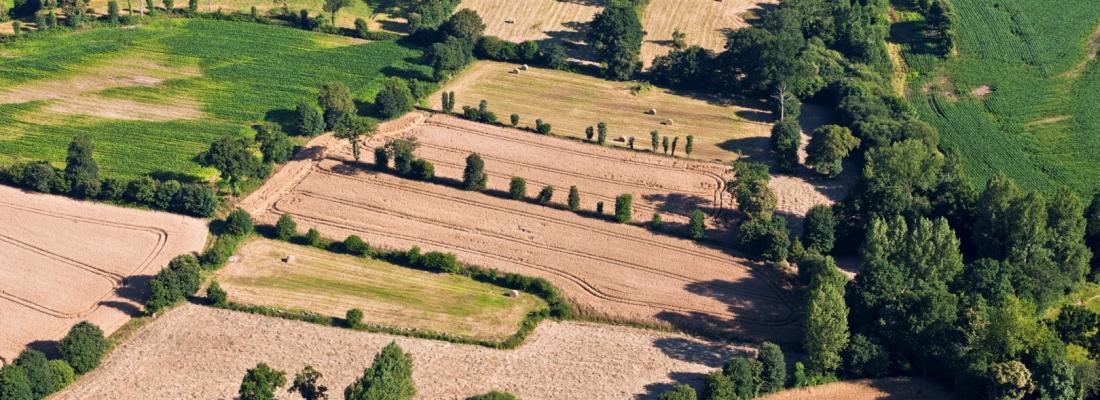Agroecology Reading time 2 min
Bocage landscapes promote plant diversity in arable fields
Published on 22 November 2022

In the 1950s, agricultural production in France took a turn. Deemed a hindrance to agricultural machinery and a potential source of pests—weeds, insects, etc.—hedgerows were largely removed to make way for huge monoculture fields. Combined with the arrival of agrochemicals, this intensive agricultural model proved to be very effective. Now, however, the model is being reconsidered, mainly because of its negative impact on biodiversity and health.
Hedgerows harbour a wide range of wild plants that can spread into arable fields, thus increasing the abundance of weeds. But they can also have positive effects on the microclimate, soil parameters, water cycle and biodiversity in arable fields. In fact, a greater environmental heterogeneity [1]in bocage landscapes could promote weed diversity by allowing different plant species to find the ecological conditions necessary for their development. To prove this hypothesis, researchers from the INRAE Brittany-Normandy centre in Rennes, in collaboration with colleagues from the CNRS, the University of Rennes 1[2] and ANSES[3], assessed the effects of bocage landscapes on weed communities by estimating plant dispersal from hedgerows and environmental heterogeneity.
The team sampled weed communities in 74 conventional and organic arable fields, in landscapes with varying degrees of hedgerow density. Their research showed that bocage landscapes containing dense and complex networks favoured weed diversity without increasing their abundance, regardless of the production method—conventional or organic. These observations could probably be explained by the increase in environmental heterogeneity observed in bocage landscapes. The diversification of weed communities is considered as a key factor in preventing the dominance of the most competitive weeds. In addition, it could promote biodiversity and associated ecosystem services, such as pollination, biological pest control and the decomposition of organic matter. These results open promising perspectives for the development of new, sustainable weed management systems aimed at preserving biodiversity in arable fields.
[1] Defined by the variations in environmental or pedoclimatic parameters.
[2] Ecosystems, Biodiversity, Evolution Joint Research Unit (ECOBIO) (CNRS/University of Rennes 1 – OSUR)
[3] The Plant Health Laboratory (LSV)
The preservation and restoration of semi-natural habitats is essential to ensure a balance between agricultural production and biodiversity conservation. The beneficial effects of hedgerows on weed communities are another argument in favour of reintroducing trees and shrubs into agricultural landscapes, which deliver many ecosystem services, including biodiversity conservation, soil and water protection and carbon sequestration.
REFERENCE
Boinot S, Mony C, Fried G, Ernoult A, Aviron S, Ricono C, Couthouis E, Alignier A. Weed communities are more diverse, but not more abundant, in dense and complex bocage landscapes. Journal of Applied Ecology. DOI : 10.1111/1365-2664.14312
